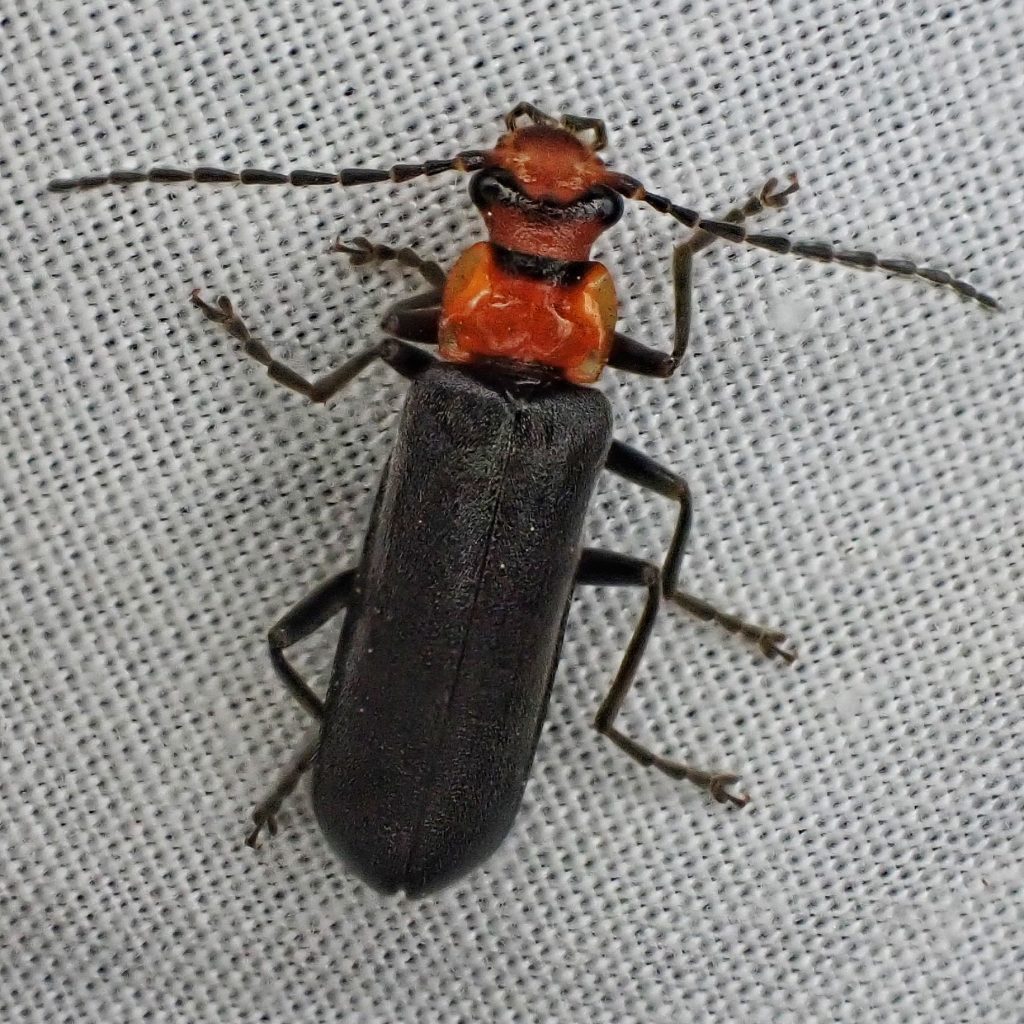
This is the handsome soldier beetle that I mentioned coming to my lights in the blog ‘First Mothing Trip of the Year’. Unfortunately I can find almost nothing specific to this species. I managed to locate both the original description by HC Fall in 1926, and his elevation of it to full species status in 1928, and I still can’t tell you why he gave it the specific epithet conspiratus. For some reason he doesn’t mention what it was found on or even the basic environment where it was found. So almost everything in this post is based on general information on the genus Podabrus that I was able to glean from “Ecological Notes on Podabrus (Coleoptera: Cantharidae)”; Fender (1973), from ‘Pacific Northwest Insects’ (Peterson; 2018), or from BugGuide.

This beetle is in the family Cantharidae. Oddly, the members of Cantharidae do not produce cantharidin (a chemical irritant that is the primary ingredient in Spanish fly). Instead they produce dihydromatricaria acid (and are the only animals known to do so) which is released from their abdomen and thorax as a chemical defense. And they advertise this possibility with that bright, aposematic coloring.
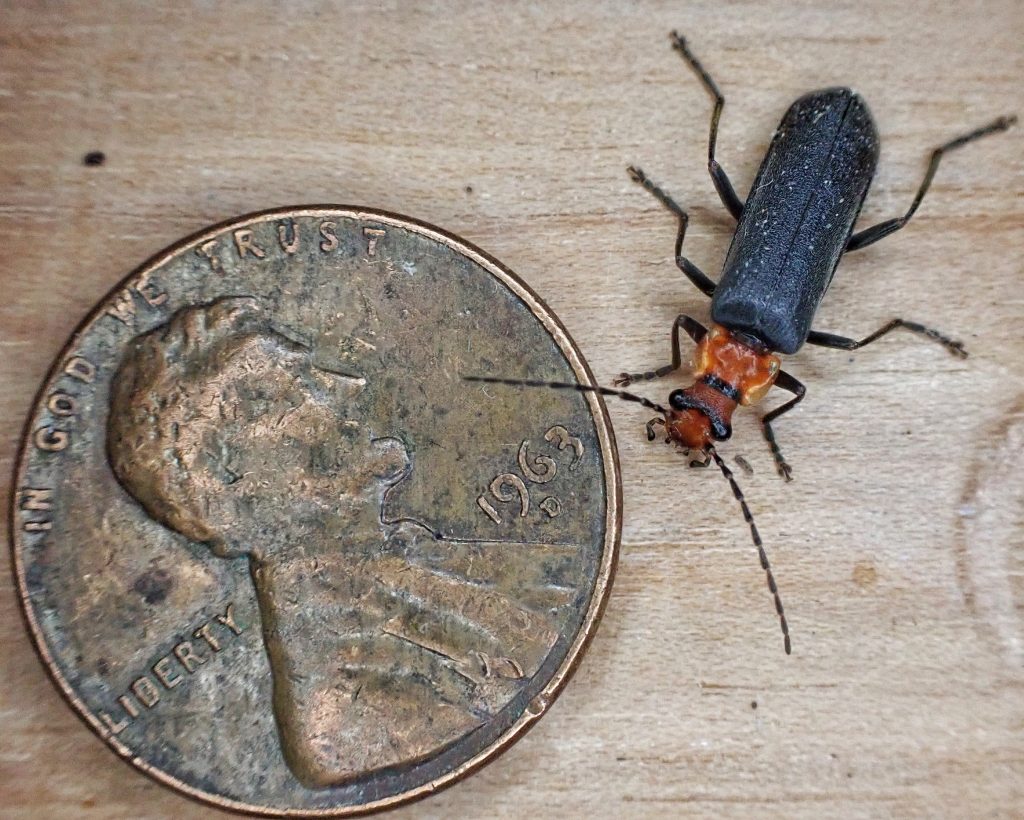
Description– This specimen was 13mm long, but I can find no size range for this species; head is mostly bright orange except for the eyes and the area between them, and narrows behind eyes to form a distinct “neck” not covered by pronotum; pronotum is bright orange except for a black line along the front portion; elytra and legs velvety dark brown to black.
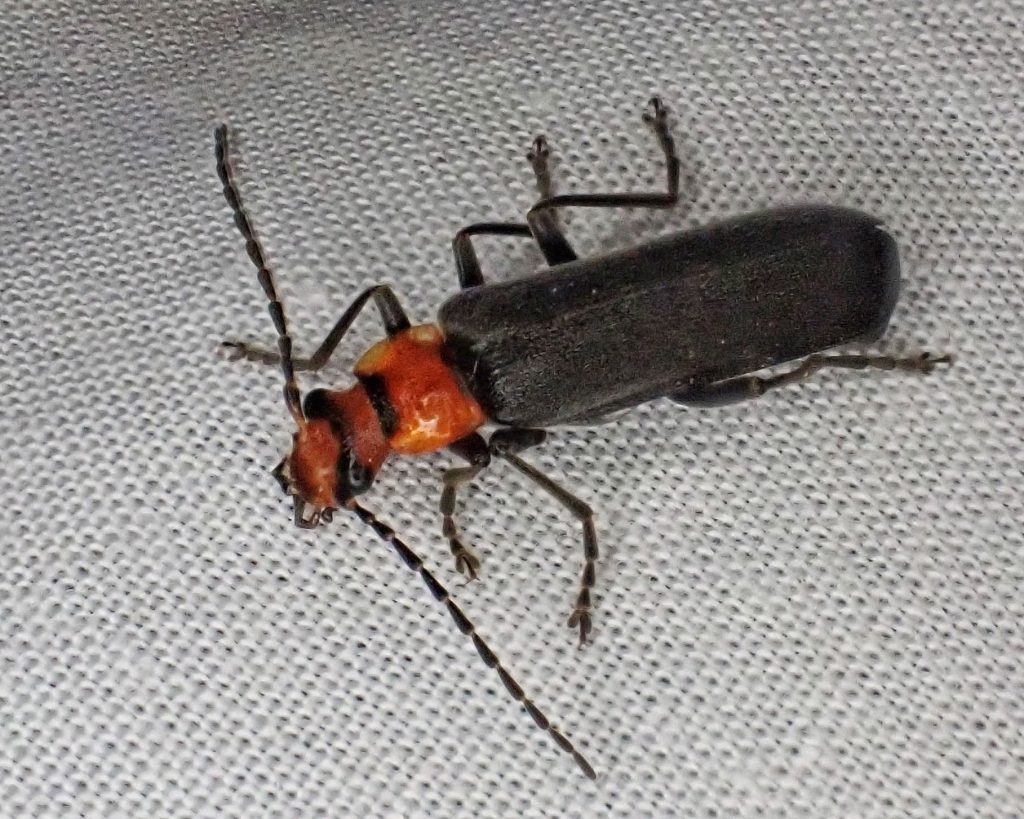
Similar species– Podabrus edmundsae has faint dark spots on middle of pronotum, and black line at the rear of the pronotum; P. excursus and P. schuhi have black midline of pronotum; P. falli has red on shoulders and front margins of elytra; P. pruinosus has no black on the pronotum; Cantharis spp. have pronotum covering rear of head.
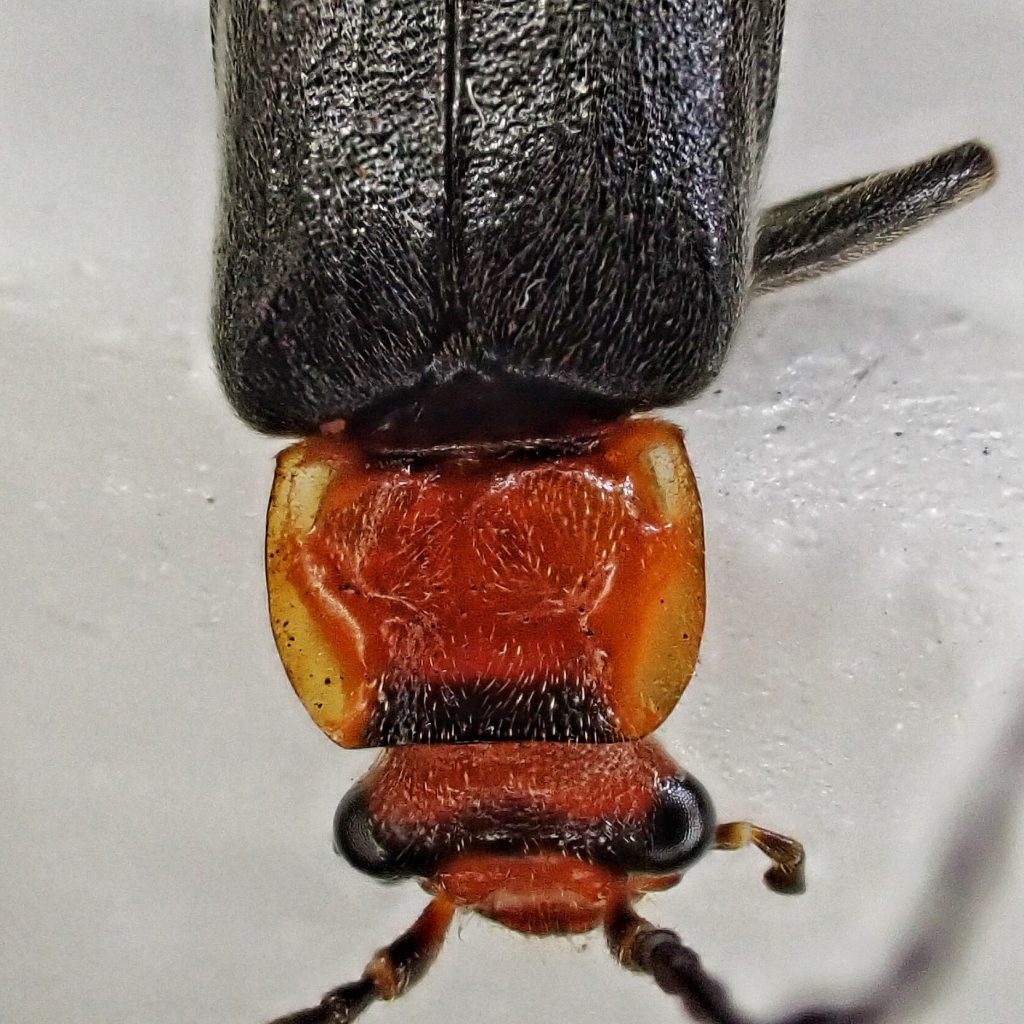
Habitat– Podabrus are usually found in the vicinity of a body of water or a waterway, and usually in an area of abundant vegetation.
Range-Pacific Northwest, from Alaska to nw California.
Eats– Podabrus spp. eat aphids and other soft bodied insects, and may eat nectar and honeydew (the exudates of aphids)
Eaten by– Presumably any insectivore which can tolerate their chemical defenses
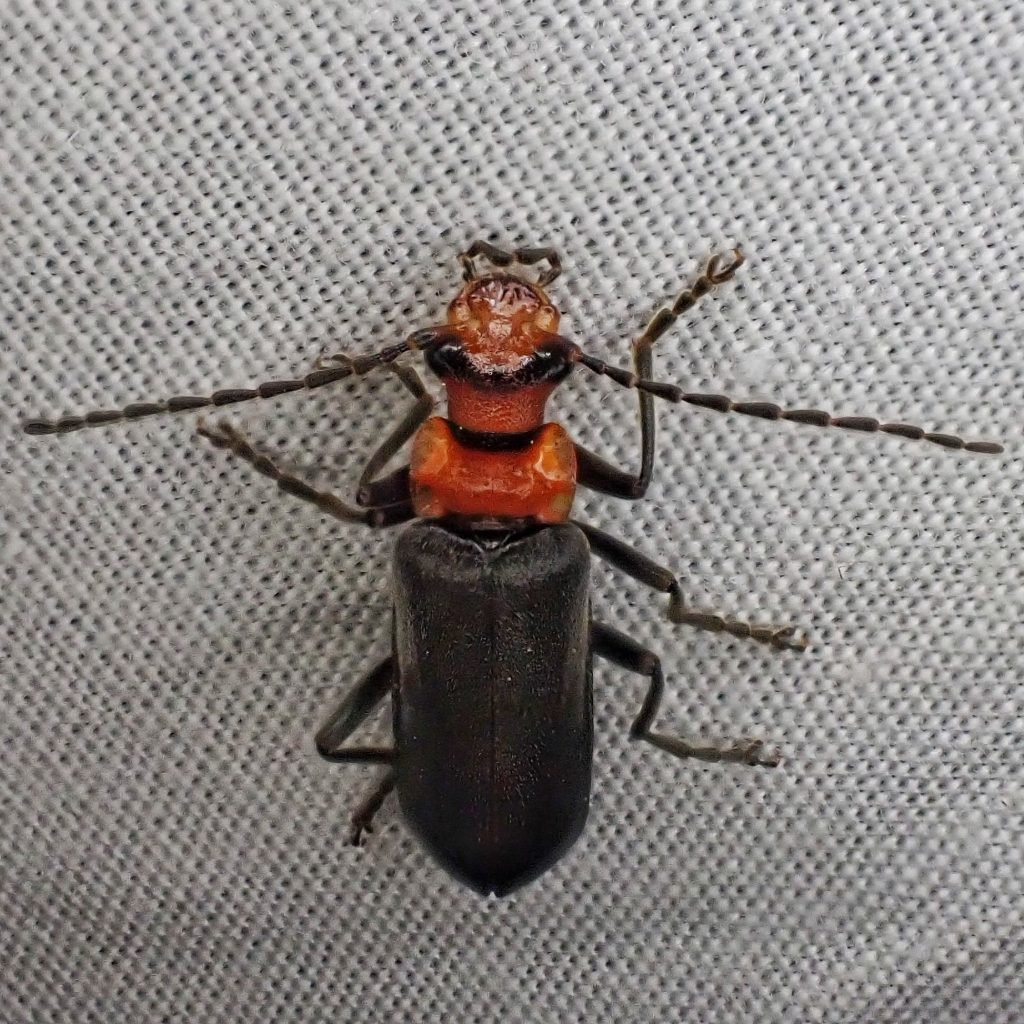
Adults active– Late April into early August
Life cycle– I can find no information for the life cycle of this genus, but they say most larvae are carnivorous and live near the soil.
Etymology of names– Podabrus is from the Greek for ‘delicate footed’, but I cannot ascertain to what exactly this refers. The specific epithet conspiratus may be from the Greek for ‘with spiral’, but I cannot verify this, nor ascertain to what it refers. Soldier beetles are so called because their red and black coloring is reminiscent of the regimental coats worn by British soldiers.
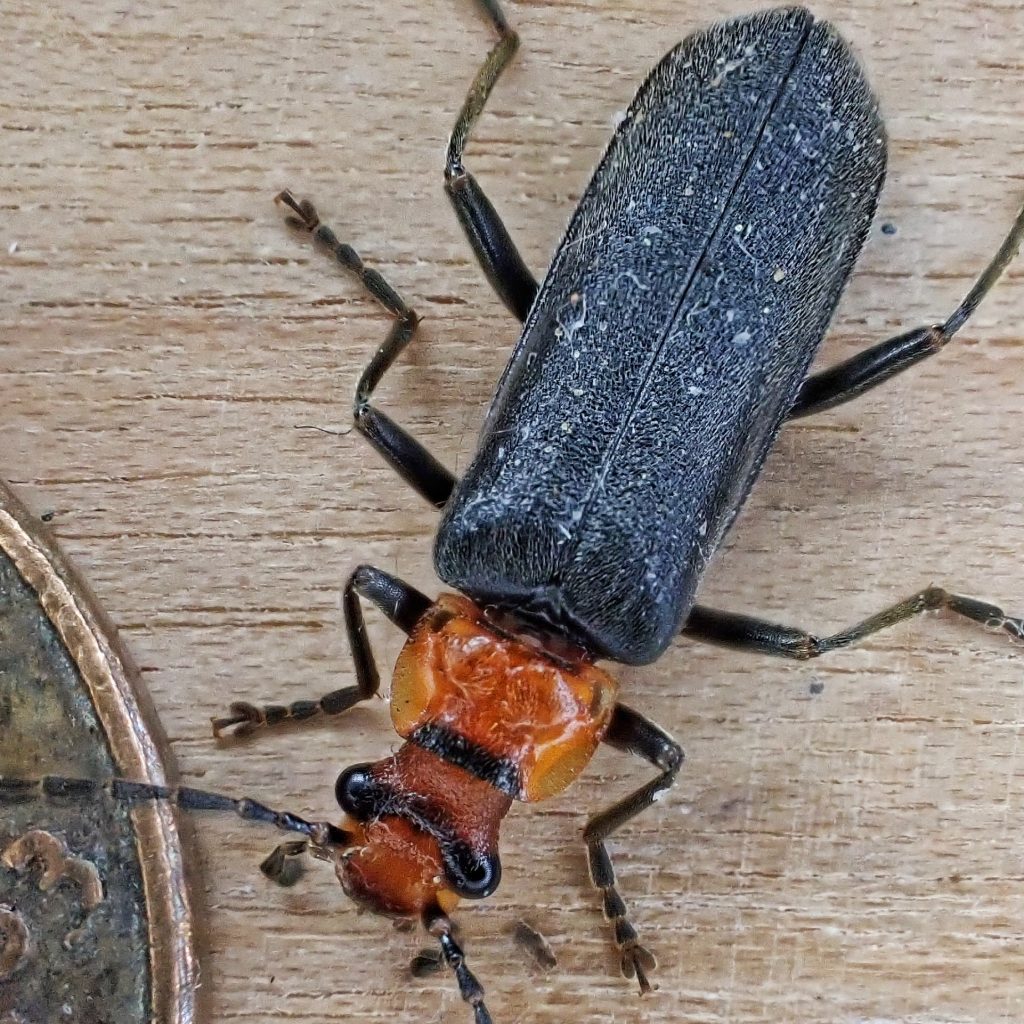
Species Podabrus conspiratus – BugGuide.Net
https://www.jstor.org/stable/3999623
new ser.:v.7-8 (1926-1928) – Entomologica Americana – Biodiversity Heritage Library
v.2:no.1-4 (1925-1926) – The Pan-Pacific entomologist – Biodiversity Heritage Library
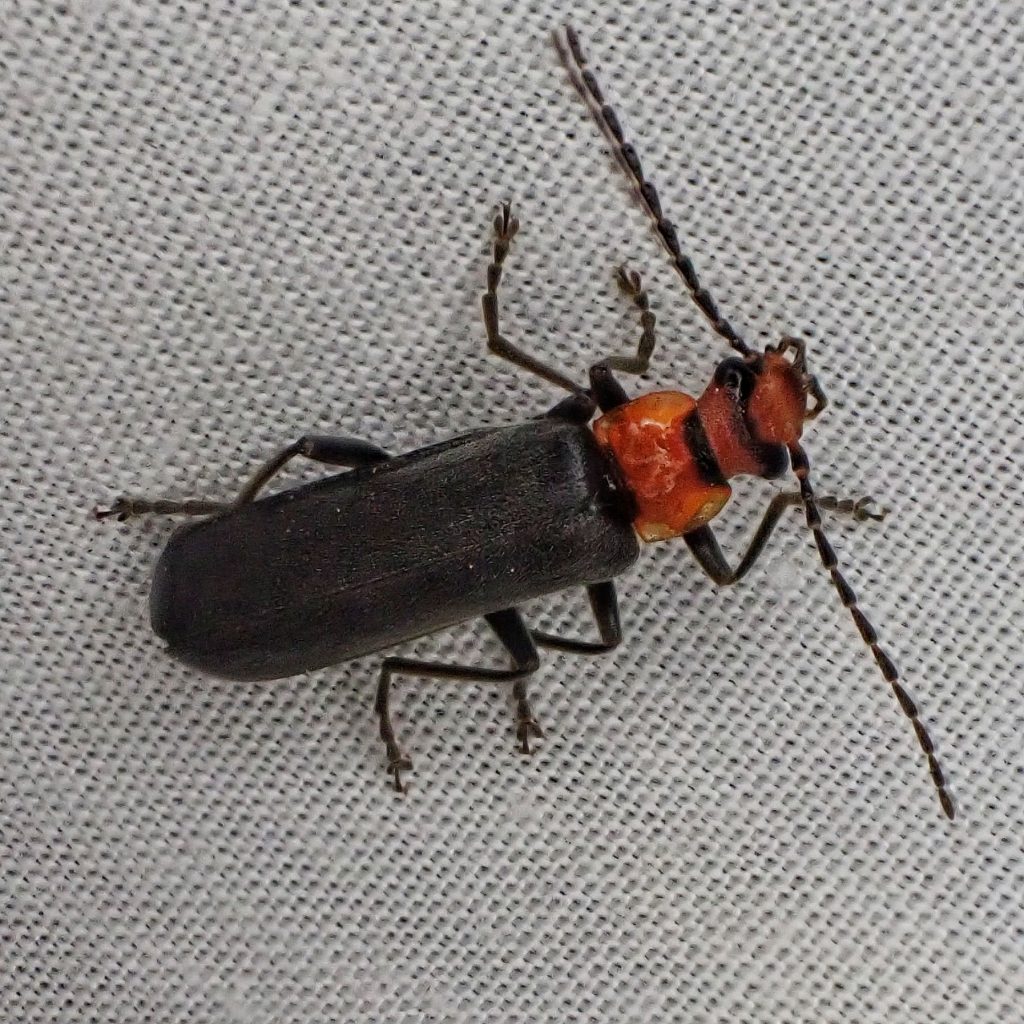
I don’t think I’ve seen any soldier beetles since moving to WA. In Texas, we had a lot of Wrinkled Soldiers. (They didn’t look very wrinkly to my eye)
Other than coming to lights, they say Podabrus are mostly found amongst vegetation and need to be swept or shaken from their perches.